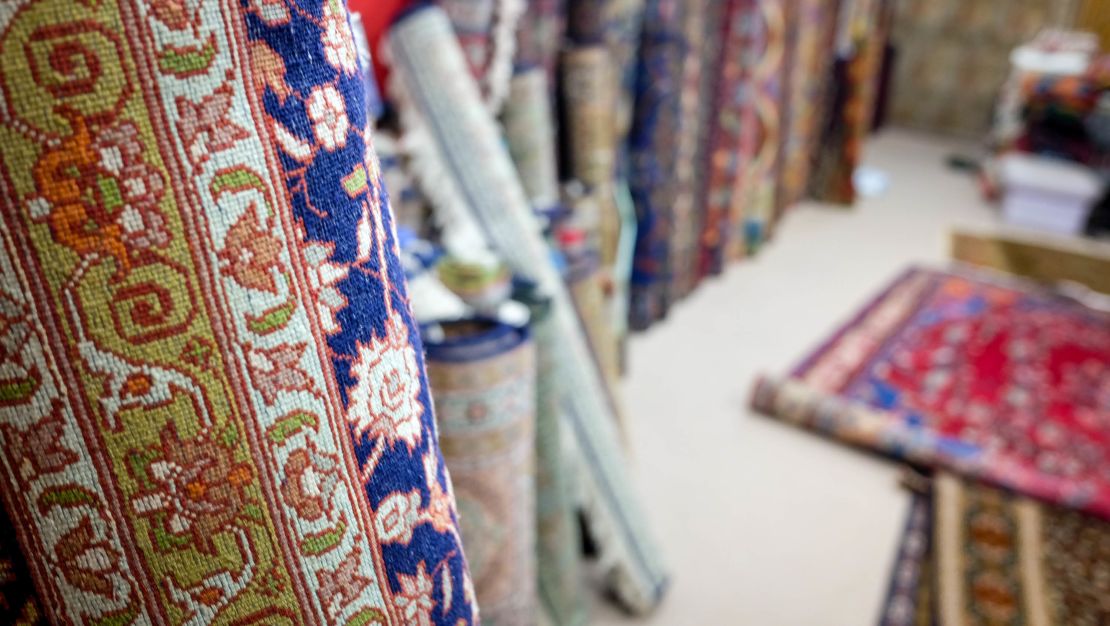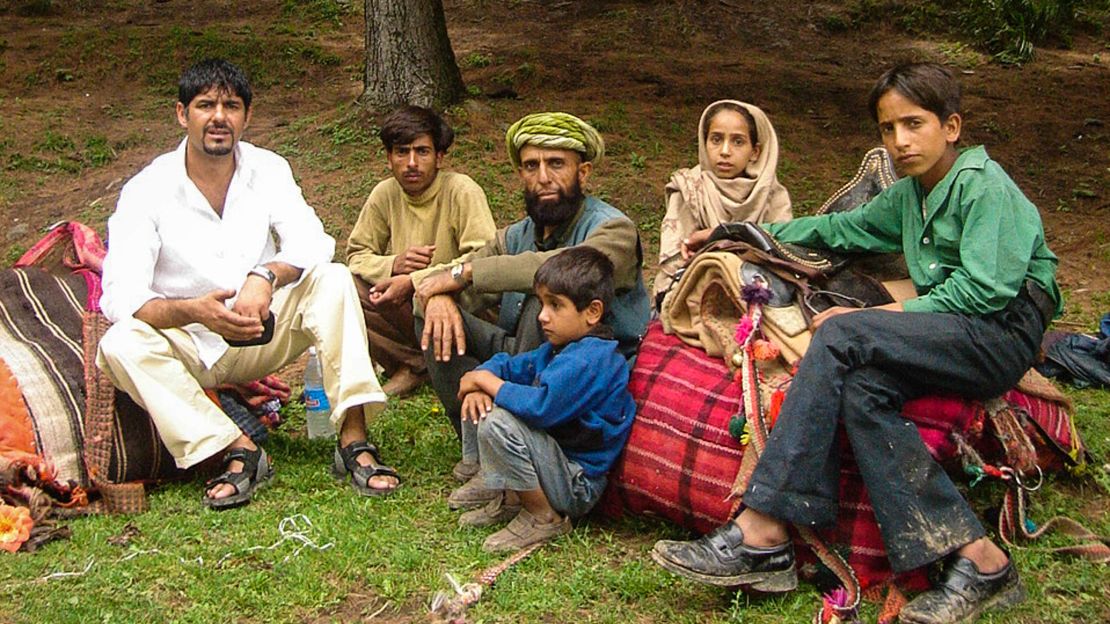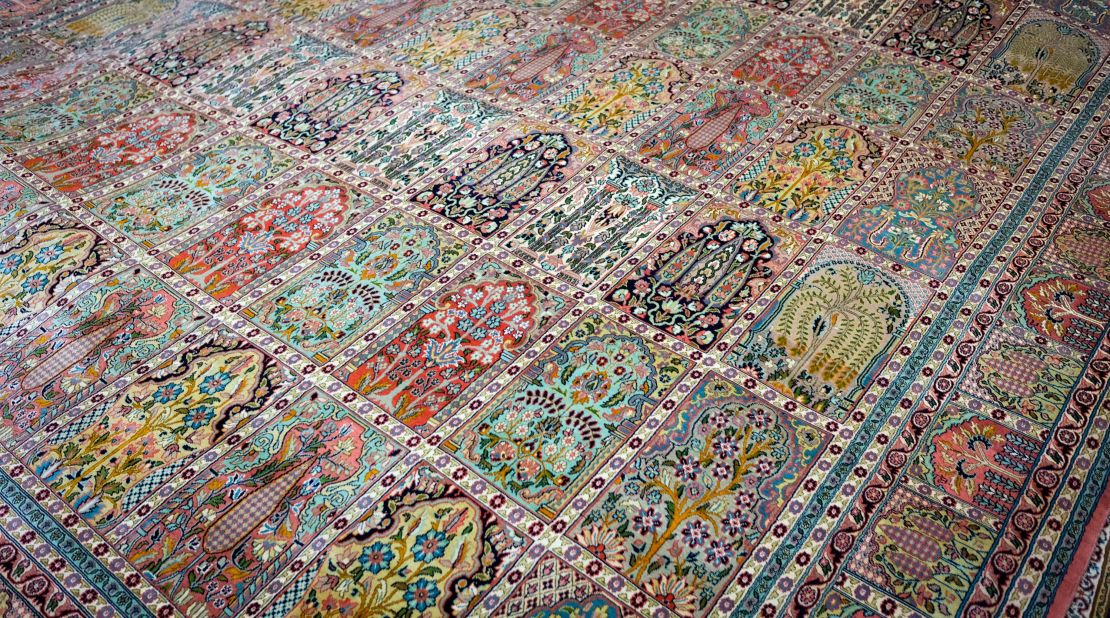In the pitch black of an Afghan night, a Soviet rocket pounds into a small village, exploding violently and likely claiming dozens of casualties.
Riyaz Bhat, 20 years old and scared beyond belief, is snatched by his guides and dragged into the darkness. Running for his life, he survives another day to continue his mission.
While Afghanistan has long been a land of conflict and intrigue where spies and elite soldiers risk their lives on clandestine operations, Bhat, from Kashmir, is on a far more unusual expedition.
He’s here to find the truth about carpets.
As conflict raged around him during the closing months of the Soviet occupation of Afghanistan in 1988, Bhat says he made a perilous weeks-long odyssey across the country to learn rug-making secrets guarded by nomads for centuries.
His quest took him via bus, jeep, horse and foot over treacherous terrain in the company of ruthless mujahedin resistance warriors. His travels were mostly at night to avoid Soviet forces.
Front line of floor coverings
“It was like crossing the world,” he recalls of his adventure. “I saw so many dangerous things, so many times I thought ‘all right this is the end of the line.’ Many times I got so scared I cried.
“I swear to God I still remember those moments, when my legs were shaking and I thought in the next moment I’ll be dead.”
Fast forward three decades and Bhat is standing in the considerably more comfortable surroundings of the carpet shop he now runs in the Qatari capital of Doha. Expat customers watch as luxurious rugs are unfurled at their feet.
A trip to his Kashmir Handicrafts Emporium is a rite of passage for many people living in or visiting Qatar. Partly for the quality of the rugs he has on sale, but also for the show that goes with them.
Bhat is no ordinary carpet salesmen. Having embarked on his youthful quest into the wilds of Afghanistan, he has transformed the secrets he learned into a lifelong passion for the handmade tribal rugs of Central Asia.
And while academics and historians have charted the origins of many of the carpets that pass through his shop, Bhat can claim to have experienced it for himself. He’s now known as a walking encyclopedia of tribal rugs.
His journey to the front line of floor coverings began in Indian-controled Kashmir, where generations of his family have produced intricate silk carpets using sophisticated blueprints that are studied for years before being replicated.
Rare encounter

Fascinated by how nomadic women living rough in Central Asia could also weave highly complex designs, he begged his family to let him travel first to Pakistan, where his uncle was a rug dealer, and then to Afghanistan, to see for himself.
“I realized that these women in the mountains of Central Asia are genius designers,” he says. “They are uneducated and illiterate, but for centuries they have been creating these rugs.
“If we think about it, it’s impossible to memorize the design of a carpet which contains more than three or four million knots. So how did they remember almost five million knots, one by one, in different colors?
“I couldn’t get the answer from books. To find out, I had to travel to Central Asia.”
After studying the rug business in Pakistan for several months, Bhat’s uncle made a deal with some resistance fighters in the spring of 1988 to take his nephew deep into Afghanistan to meet nomadic rug-makers.
Weeks of arduous travel later, he reached a range of foothills in Herat, a province in Afghanistan’s northwestern corner, where his guides led him by foot to a nomadic camp in the mountains.
“I was so tired and exhausted, but also fascinated,” Bhat says. “It was my dream come true and I felt like I was in an Indiana Jones movie.”
Granted permission by an elder to meet the tribe’s women weavers – a rare encounter for a male outsider – he soon discovered how they completed such technical, symmetrical work without books to guide them.
“At last, I saw how they are working on the loom,” Bhat says. “They are singing. And they are singing the design to each other.”
The whole process, he learned, takes up to eight years.
“First a 10-year-old girl is introduced to the loom to work with the fiber and colors and designs. If she likes it, they teach her the work, if she doesn’t, she’s given a different job.
“Mothers work with daughters, showing them how to shear the sheep, how to find the herbs and flowers to make the dyes, and then how to create the designs.”
Perfect symmetry

When the weaving begins, Bhat says, mothers and daughters work at either end of the rug. The mother sings out the numbers of knots and colors, and the daughter copies the pattern until they meet in the middle.
“She sings, ‘two of blue, three of yellow,’ and that’s how they get perfect symmetry.
“It takes five years to memorize the design, by which time the daughter is 18 years old – she’s a carpet designer and weaver. She’s an independent woman.
“And that’s how it’s been working for thousands of years with these people.”
Armed with all he learned from the women weavers, Bhat made his return journey – another lengthy odyssey through a country at war.
It would not be his final visit to Afghanistan.
In 1999, lured by a Qatari customer who bemoaned the lack of good rugs in his homeland, Bhat set up shop in Doha, becoming an overnight success. To maintain supplies, he made regular forays back to meet Afghanistan’s nomads.
The country, he explains, has become a magnet for the main nomadic tribes of Central Asia. For centuries, they’ve taken advantage of conflict and isolation to continue ancient ways of life while their original homelands have modernized, the rug work handed to machines.
Families who trace their heritage to Turkmenistan, Kazakhstan, Uzbekistan, Pakistan and Iran – as well as homegrown Afghan nomads – are still producing rugs in the Afghan wilderness in accordance with age-old traditions.
Bhat and his relatives use a network of contacts to buy rugs that are cast off when a nomad family replaces them with a freshly woven carpet. These trading missions back into a sometimes lawless land still have a whiff of adventure.
Experimentation and imagination

“When we go, we have to take a lot of cash because there are no bank machines, no checkbooks,” he says. “So we go in a jeep with bodyguards, armed with machine guns, just like a Hollywood movie.”
The fruits of these trips can be seen lining the wall of Bhat’s shop. Roll after roll of beautiful silk and wool floor coverings that are as much works of art as they are decorative home furnishings.
They don’t come cheap. Some of the finest silk carpets – the best, Bhat says, are from his homeland Kashmir – can fetch upwards of $7,000. Included in the price of all the rugs he sells is the full backstory, which he writes up and presents to the new owner.
“It’s like a show,” remarks one customer from Portland, Oregon as the Rug Man and his team lay out carpet after carpet for him to inspect. “But they’re all so beautiful, it’s hard to choose.”
While Bhat is aware that some of his clients buy their rugs simply to match a lampshade or wallpaper, he urges them to appreciate the true, human value of his merchandise.
“These carpets are so special,” he says. “You are not just buying a carpet, you are buying someone’s hundreds of hours of work, of frustration.
“You are buying their experimentation and imagination, their dreams and their wishes. It is something amazing.”
Kashmir Handicrafts Emporium, Al Mirqab Al Hadeed Street, Doha; +974 4443 2761
This story was originally published in 2018.



















